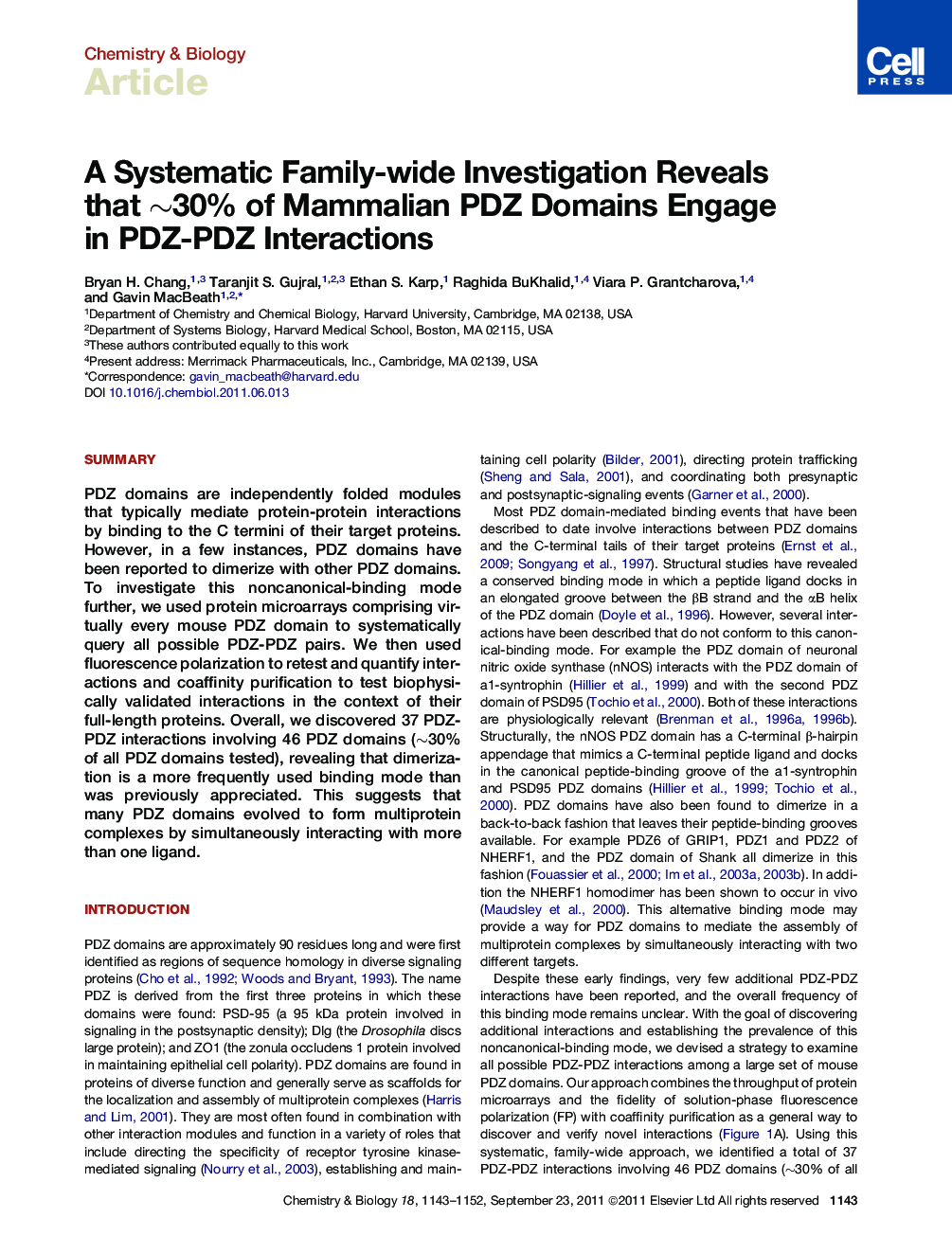| Article ID | Journal | Published Year | Pages | File Type |
|---|---|---|---|---|
| 1391393 | Chemistry & Biology | 2011 | 10 Pages |
SummaryPDZ domains are independently folded modules that typically mediate protein-protein interactions by binding to the C termini of their target proteins. However, in a few instances, PDZ domains have been reported to dimerize with other PDZ domains. To investigate this noncanonical-binding mode further, we used protein microarrays comprising virtually every mouse PDZ domain to systematically query all possible PDZ-PDZ pairs. We then used fluorescence polarization to retest and quantify interactions and coaffinity purification to test biophysically validated interactions in the context of their full-length proteins. Overall, we discovered 37 PDZ-PDZ interactions involving 46 PDZ domains (∼30% of all PDZ domains tested), revealing that dimerization is a more frequently used binding mode than was previously appreciated. This suggests that many PDZ domains evolved to form multiprotein complexes by simultaneously interacting with more than one ligand.
Graphical AbstractFigure optionsDownload full-size imageDownload high-quality image (244 K)Download as PowerPoint slideHighlights► PDZ-PDZ interactions were investigated on a proteome-wide scale by combining the throughput of protein microarray technology with the fidelity of solution-phase fluorescence polarization ► Thirty-seven PDZ-PDZ interactions were identified, and a representative subset of these interactions was investigated biochemically and found to mediate protein-protein interactions in the context of their full-length proteins ► Overall, PDZ-PDZ dimerization was found to be a much more frequently used binding mode than was previously appreciated
